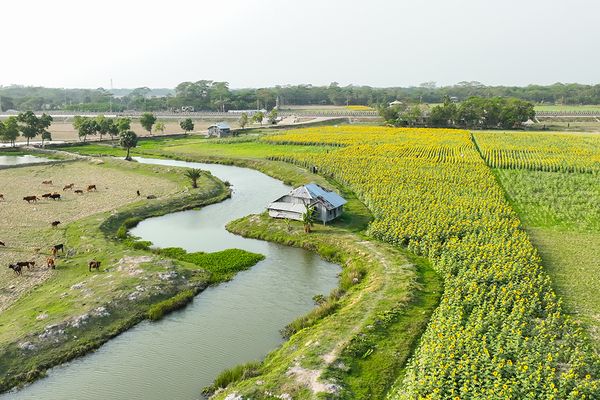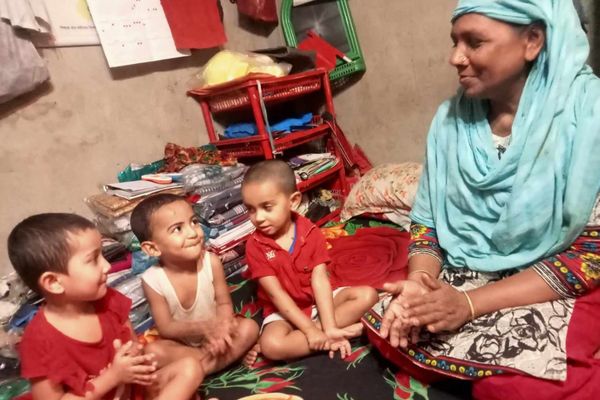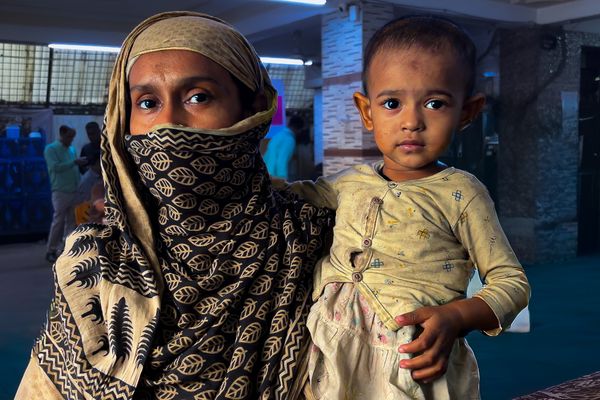Bangladesh is no stranger to the harsh realities of the climate crisis, but 2024 was one of the most challenging years so far. People faced five major disasters in just twelve months, including the worst floods they’d seen in decades, cyclones, and extreme heatwaves. On top of these disasters, households faced less obvious crises, such as the drastically rising prices of essentials like oil, as well.
Until 2022, Ukraine and Russia accounted for 60% of the world’s sunflower oil supply. The onset of war between the two countries abruptly halted exports from two key players in the industry, disrupting the global edible oil market. It spiked global inflation with ripple effects extending as far as Bangladesh—a country lying between India, China and Myanmar, and roughly the size of New York state, but with eight times its population.
With supply chain disruptions driving up global demands, consumers in South Asian markets were hit particularly hard. Communities living in climate-vulnerable areas, such as coastal areas, who are already spending the equivalent of half their incomes on disaster preparedness and recovery, bore the brunt of the impact.
According to Bangladesh’s Centre for Policy Dialogue (CPD), the average food expenditure for a family is approximately BDT 18,335 (USD 150) a month in the country. Yet, the average farmer earns only about BDT 12,223 (USD 100) a month.
That is, food expense as a percentage of their income is twice as much as their western counterparts, with edible oil accounting for a chunk of that basket. For many of these families, buying even a litre of palm oil for BDT 149 (USD 1.22) can feel like an unattainable luxury while trying to fit their life in a hundred-dollar bill.
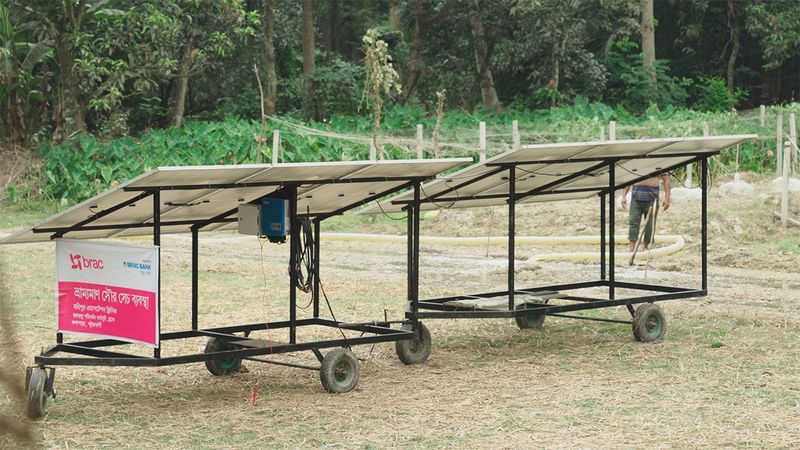
Solar-powered pumps that irrigate the sunflower crops with surface water found in the canals of Patuakhali, southern Bangladesh. © Bayezid Islam Polin, BRAC 2024
Connecting the dots of adaptation through agricultural initiatives
A couple of years ago, BRAC’s one-stop service centres, called Climate Adaptation Clinic, initiated a project introducing salt-tolerant sunflower seeds like Hysun33 for smallholder farmers in climatic hotspots. They piloted cultivation efforts in the salt-stricken lands in the coastal area of Patuakhali, southern Bangladesh. The timing was such that the farmers of Patuakhali found themselves well-prepared when the global edible oil crisis hit. This success was the result of a carefully planned effort that combined climate adaptation with economic benefits. But how did this all come together?
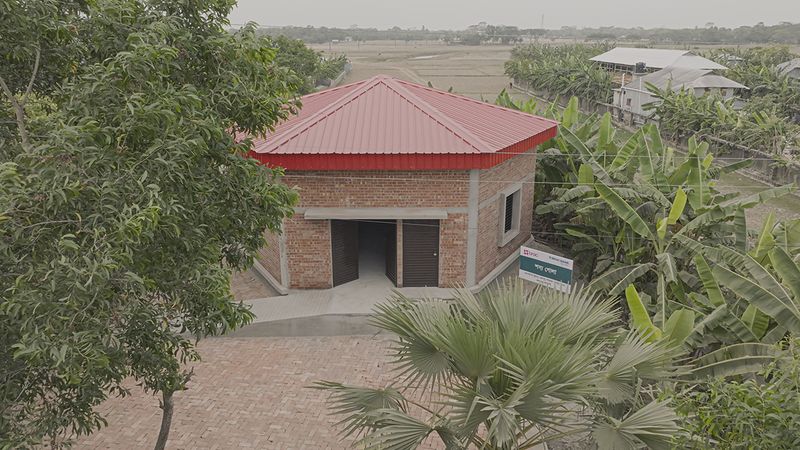
Crop storage facilities built in collaboration between the local community and BRAC’s Adaptation Clinic. © BRAC 2024
Initially, the project began by collaborating with 100 farmers in the coastal region of Patuakhali, equipping them with sunflower seeds and farm advisory support. However, within two harvest seasons, the project expanded to include nearly 2,000 farmers, bringing 1,000 acres of land back to life in the process. While challenges such as water scarcity persisted, the clinic found innovative solutions—solar-powered surface irrigation pumps, fitted with wheels for mobility, enabled farmers to irrigate multiple fields while reducing operational costs. Infrastructure development played a key role too—BRAC, in collaboration with the community, built crop storage systems for storing seeds as well as sunflower oil. This infrastructure ensures that farmers can harvest, store, and process their sunflower seeds at the right temperature and moisture levels, enabling them to cope with the fluctuation of edible oil prices and generate profit.
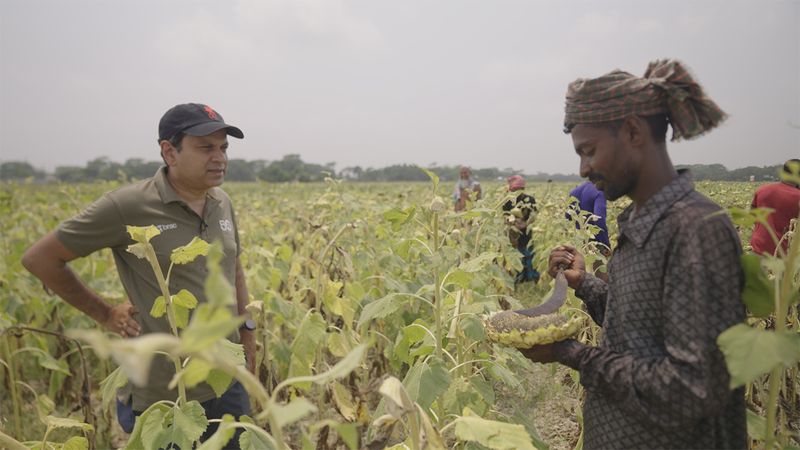
Asif Saleh (left), Executive Director, BRAC, meets Afzal Hossain (right), a sunflower farmer, and learns how farmers like Afzal are trying to tackle the salinity crisis. © Bayezid Islam Polin, BRAC 2024
Doing adaptation differently
Meet Afzal Hossain, a farmer from Patuakhali. Investing BDT 8,000 (USD 65.45) from seed to oil extraction, Afzal realised BDT 24,000 (USD 196.35) in sales—a profit of BDT 16,000 (USD 130.90). This profit is generated during the dry season when the land remains fallow as salinity levels of the soil increase. He also availed crop insurance from BRAC so that the production cost of his sunflower farming venture remains insured against any possible adversities. Apart from sunflower oil, the husk of the sunflower seeds is also being used by Afzal as cattle feed.

Farmers are now being equipped with the right machines to extract seed from the flowers, and then oil from the seeds. © Sadiqure Rahman, BRAC 2024
Attempts to introduce sunflower farming are not new. But this initiative has been particularly successful because of the establishment of forward and backward market linkages. Previously, local oil presses, which are traditionally used to press out mustard oil, were used for sunflower oil extraction. The result was a lower quality, often dark and greasy oil. This time around, farmers were able to set up oil presses which are suited for sunflower oil extraction. They began producing high-quality, golden sunflower oil, making it far more marketable. This shift not only improved the product but also opened doors for the Adaptation Clinic to engage with both local and international sunflower oil manufacturers.
The edible oil crisis, combined with the pressures of climate change and geopolitical conflicts, underscores the need for multifaceted, integrated approaches. Solutions in silos will not suffice. They offer a model for how small communities from the edge of the world can drive lasting change through a holistic approach.
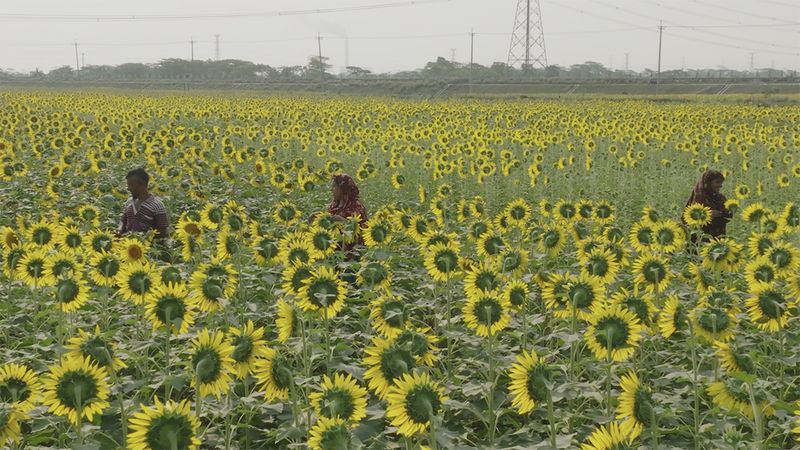
Farmers of Patuakhali working in sunflower fields. © Sadiqure Rahman, BRAC 2024
